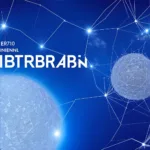
Ethereum staking rate has become a cornerstone of the liquid staking ecosystem, offering a native cryptocurrency rate that is integral to finance. This rate quantifies the total earnings that stakers obtain for verifying Ethereum transactions. Its importance spans across DeFi, centralized digital asset finance, and even traditional finance sectors. The emergence of this rate has sparked a need for an ether staking benchmark to aid in benchmarking, research, and risk transfer.
Understanding the Ethereum Staking Rate
Validators of Ethereum stake a minimum of 32 ETH to secure the network and, in return, receive a variable reward. This staking rate is not static; it is a floating rate that includes rewards for consensus layer duties and priority fees from transactions. The former adheres to a “monetary policy” set by Ethereum, which adjusts the rewards in relation to the total ETH staked. The latter fluctuates with the network’s demand, often increasing with the influx of new information or opportunities.
Staking Rewards and Investment Dynamics
As digital assets gain traction in investment portfolios, the demand for predictable yields escalates. Investors seek a reliable staking rate, and providers strive to offer competitive returns. Benchmarking these yields serves as a crucial tool for investors to measure performance and for providers to showcase their value-add.
Comparing the Ethereum staking rate to traditional financial benchmarks like U.S. Treasuries or SOFR may not be a direct match. However, they share similar dynamics in terms of opportunity cost. A standardized and independently-calculated rate, complete with its components, equips analysts with valuable insights. This information is vital for understanding Ethereum’s position relative to other money markets.
Fixed vs Floating Swap Markets
The variability of future staking rewards poses a challenge for validators. Imagine a scenario where a validator could exchange their future variable staking yield for a fixed rate. What rate would they accept? This question marks the beginning of a fixed vs floating swap market and leads to the development of a forward curve for the Ethereum staking rate.
Integrating Ethereum Staking into Broader Finance
Expanding the Ethereum staking rate’s applications enhances network security, attracts new ether investment interest, and builds bridges to traditional finance. This vision inspired the creation of CESR™, the composite ether staking rate. CESR and other Ethereum-focused LSTfi Protocols offer insights in the recent report, “The Ultimate Q4 2023 Market Overview.”
Conclusion
The integration of the Ethereum staking rate into broader financial systems holds immense potential. It not only fortifies network security but also piques the interest of new investors in ether. By providing a bridge to traditional finance, it opens up new avenues for understanding and leveraging digital assets. The creation of benchmarks like CESR™ plays a pivotal role in this integration, offering clarity and a point of reference for those navigating the complexities of crypto finance. As the industry evolves, the Ethereum staking rate will undoubtedly remain a key player in the digital asset ecosystem.




